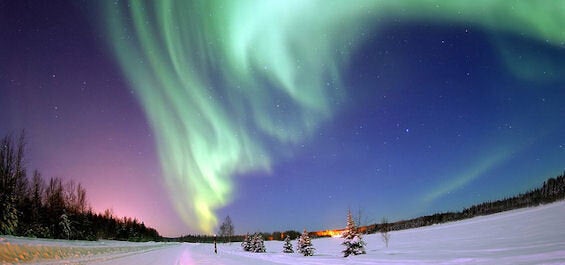It is perhaps fitting that green is the main colour of the Northern Lights, that mysterious spectacle of nature dancing across the Arctic skies each winter. The fragile environments of the frozen north, and the communities and cultures which call them home need tourists which will tread lightly in their pursuit of a glimpse of the Aurora. And yet travellers to the icy reaches of northern Scandinavia this winter should find the time to turn their attention away from the skies and instead direct it at the people living there; the people who will really light up the Northern Lights.

Northern Lights: Credit Beverly & Pack
Although the Northern Lights are an ancient phenomenon, mass marketing of them as a tourist attraction is still relatively new. And yet, very quickly tourism to the Arctic regions has increased. As tours in search of the lights firmly installs themselves into the horribly-named bucket list of global travel the potential for destructive, mass tourism to overtake more responsible, respectful initiatives is very real. Thankfully, in Finland, this increase so far appears to be well-managed, with environmental and social considerations taken very carefully. However ultimately it is up to us as tourists to vote with our feet and wallets, to choose carefully which types of tourism we want to support and grow. Just because we're visiting 'developed' countries doesn't mean that responsible tourism, fair wages and fair business which supports local communities is any less important. It can be tempting to just think about the environmental impacts of tourism in the Arctic, but for local communities in Lapland, the socio-economic impacts are just as important.
Indigenous to Norway, Finland, Sweden and Russia, the Sami people have lived in the vast northern wildernesses for generations. With a culture rooted in the environments, landscapes and wildlife of the Arctic Circle, these are people who can guide tourists not just through a picturesque landscape but a colourfully cultural one too. The Sami people's relationship with the countries which now encompass their traditional lands is complicated. Recognition of traditional land rights is an issue, and while places such as Finland, Norway and Sweden now have Sami Parliaments, responsible for education, for the preservation of language and to tackle cultural and social discrimination, the Sami people are still coping with loss of culture and language through generations, and fighting threats to their environment and culture due to oil prospecting, mining dam building, logging, and exploitative tourism.
Despite this, in many areas of Scandinavia, the Sami are becoming more dependent on tourism for income, and with tourist interest in the Northern Lights increasing, the opportunities to become involved in guiding and cultural tourism initiatives have also risen. For us as tourists, connecting with the traditional guardians of the northern landscapes provides another dimension; a chance for a holiday which is all about looking at the landscape to become one where tourists can become part of the cultures which have shaped it for hundreds of years. For the Sami, responsible tourism offers a chance to maintain, celebrate and share traditions and skills. Although tourism was introduced into Sami areas by the Finns in Finland, over the last few years there has been a positive movement of Finns and Sami working together to create sustainable, small scale, culturally sensitive tourism products.
But cultural tourism and cultural tourists here must be watchful. As visitor numbers and the desire to connect with the Sami increases, so too does the opportunity for exploitation and tourists should be careful to avoid "authentic" experiences more rooted in tourist dollars than traditional culture. For example, crossing the Arctic Circle - a popular ceremony for travellers and touted as an authentic Sami ritual - has no significance in traditional culture. Gift shops often offer cheap reproductions disguised as traditional craftsmanship and attractions may feature non-Sami staff dressed up in traditional clothing. So what can travellers do? Don't be afraid to ask questions of a tour operator to find out more of the background to cultural experiences, or to ask to include respectful experiences of Sami culture into a trip. Another tip is to look out for the colourful "Saami Duodji" label on handicrafts, a mark of authenticity for traditionally, Sami-made crafts.
Yes the lights are green, but environmental concerns should not be the only ones on our mind if we head off in search of the Northern Lights this winter. Of course, limiting our impact on the fragile Arctic landscape is important, but to truly connect with these places we need to understand, respect and help preserve the cultural traditions and the people which have shaped them.
For more information on responsible tourism and the Northern Lights take a look at responsibletravel.com's 2 minute travel guide to Northern Lights Watching - http://www.responsibletravel.com/holidays/northern-lights-watching and to Finland - http://www.responsibletravel.com/holidays/finland.